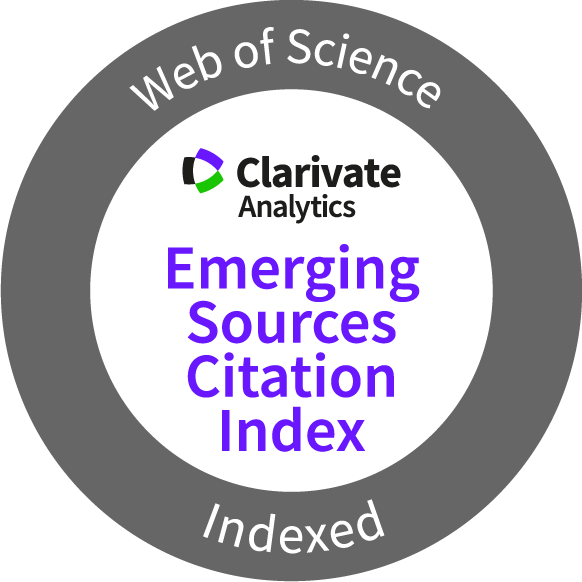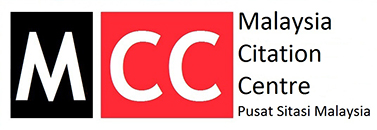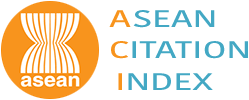Antifungal Activity of Aegle marmelos (L.) Corrêa and Cassia alata L. Extracts Against Candida krusei and Candida parapsilosis
Keywords:
Antimicrobial, Candidiasis, Methanolic, Plant Extracts, YeastAbstract
Candidiasis is a fungal infection caused by several Candida species, including Candida krusei and Candida parapsilosis. It poses a significant threat to human health, particularly in immunocompromised individuals and those with underlying medical conditions. The rapid development of microbial resistance against antibiotics and the emergence of new strains are burdens to the global health community. Medicinal plants could be an excellent source for their potential antimicrobial effects. Therefore, this study aims to assess the antifungal action of Aegle marmelos and Cassia alata extracts on the growth and morphological changes of Candida krusei and Candida parapsilosis. The pathogens were cultured on media containing each extract individually. Itraconazole was used as a positive control, whereas dimethyl sulfoxide (DMSO) was used as a negative control. The minimum inhibitory concentration (MIC) and minimum fungicidal concentration (MFC) were determined by the microdilution method. All samples were processed for microscopy observations using a scanning electron microscope (SEM). The MIC of methanolic extract indicated that the leaf and unripe fruit of A. marmelos and C. alata against C. parapsilosis and C. krusei were similar at 75 mg/mL. Results of the MFC showed both pathogens were killed at a concentration of 150 mg/mL for both plant extracts. The MIC and MFC results of the methanolic extract indicated that the unripe fruit of A. marmelos exhibited fungistatic activity, while the leaves of both C. alata and A. marmelos demonstrated both fungicidal and fungistatic effects against C. parapsilosis and C. krusei. SEM observations showed significant changes in the morphology of C. krusei and C. parapsilosis compared to the control, in which the fungi were in normal form. The findings indicate the potential use of A. marmelos and C. alata methanolic extract as antifungal agents for candidiasis treatment. The extracts showed comparable inhibitory action to the commercial fungicide itraconazole.
Downloads
Metrics
References
Abubacker, M.N., Ramanathan, R. & Senthil K.T. 2008. In vitro antifungal activity of Cassia alata flower extract. Indian Journal of Natural Products and Resources, 7(1): 6–9.
Adelowo, F. 2017. An overview of the phytochemical analysis of bioactive compounds in Senna alata. Advances in Biochemistry, 5(5): 102-109. DOI: https://doi.org/10.11648/j.ab.20170505.14
Alyousef, A.A. 2021. Antifungal activity and mechanism of action of different parts of Myrtus communis growing in Saudi Arabia against Candida species. Journal of Nanomaterials, 2021: 1-10. DOI: https://doi.org/10.1155/2021/3484125
Appiah, T., Boakye, Y.D. & Agyare, C. 2017. Antimicrobial activities and time-kill kinetics of extracts of selected Ghanaian mushrooms. Evidence-Based Complementary and Alternative Medicine, 2017: 4534350. DOI: https://doi.org/10.1155/2017/4534350
Balakumar, S., Rajan, S., Thirunalasundari, T., & Jeeva, S. 2011. Antifungal activity of Aegle marmelos (L.) Corrêa (Rutaceae) leaf extract on dermatophytes. Asian Pacific Journal of Tropical Biomedicine, 1(4): 309-312. DOI: https://doi.org/10.1016/S2221-1691(11)60049-X
Berkow, E.L., Lockhart, S.R. & Luis, O.Z. 2020. Antifungal susceptibility testing: Current approaches. Clinical Microbiology Review, 33(3):1-30. DOI: https://doi.org/10.1128/CMR.00069-19
Bhanot, M. 2018. Development and sensory evaluation of unripe and ripe Bael fruit powder (Aegle marmelos), Journal of Pharmacognosy and Phytochemistry, 7(4): 2894–2897.
Bhuyan, D.J., Vuong, Q.V., Chalmers, A.C., van Altena, I.A., Bowyer, M.C. & Scarlett, C.J. 2017. Phytochemical, antibacterial and antifungal properties of an aqueous extract of Eucalyptus microcorys leaves. South African Journal of Botany, 112: 180–185. DOI: https://doi.org/10.1016/j.sajb.2017.05.030
Boregowda, R.S., Murali, N., Udayashankar, A.C., Niranjana, S.R., Lund, O.S. & Prakash, H.S. 2019. Antifungal activity of Eclipta alba metabolites against sorghum pathogens. Plants, 8(3): 72. DOI: https://doi.org/10.3390/plants8030072
Clinical and Laboratory Standards Institute, 2024. Performance standards for antimicrobial susceptibility testing; 34th ed. CLSI supplement M100. Wayne, PA, USA
Cox, S.D., Mann, C.M., Markham, J.L., Bell, H.C., Gustafson, J.E., Warmington, J.R. & Wyllie, S.G. 2000. The mode of antimicrobial action of the essential oil of Melaleuca alternifolia (Tea tree oil). Journal of Applied Microbiology, 88(1): 170–175. DOI: https://doi.org/10.1046/j.1365-2672.2000.00943.x
Devi, M., Devi, S., Sharma, V., Rana, N., Bhatia, R.K. & Bhatt, A.K. 2020. Green synthesis of silver nanoparticles using methanolic fruit extract of Aegle marmelos and their antimicrobial potential against human bacterial pathogens. Journal of Traditional and Complementary Medicine, 10(2): 158–165. DOI: https://doi.org/10.1016/j.jtcme.2019.04.007
Fatmawati, S., Yuliana, Purnomo, A.S. & Abu Bakar, M.F. 2020. Chemical constituents, usage and pharmacological activity of Cassia alata. Heliyon, 6(7): 04396. DOI: https://doi.org/10.1016/j.heliyon.2020.e04396
Freire, J.C.P., Júnior, J.K.D.O., Silva, D.D.F., Sousa, J.P. De, Guerra, F.Q.S. & De Oliveira Lima, E. 2017. Antifungal activity of essential oils against Candida albicans strains isolated from users of dental prostheses. Evidence-Based Complementary and Alternative Medicine, 2017: 1-9. DOI: https://doi.org/10.1155/2017/7158756
Gutiérrez, J.A., Caballero, S., Díaz, L.A., Guerrero, M.A., Ruiz, J. & Ortiz, C.C. 2018. High antifungal activity against candida species of monometallic and bimetallic nanoparticles synthesized in nanoreactors. ACS Biomaterials Science and Engineering, 4(2): 647–653 DOI: https://doi.org/10.1021/acsbiomaterials.7b00511
Ibrahim, N.A., El-Sakhawy, F.M., Mohammed, M.M.D., Farid, M.A., Abdel-Wahed, N. A.M. & Deabes, D.A.H. 2015. Chemical composition, antimicrobial and antifungal activities of essential oils of the leaves of Aegle marmelos (L.) Corrêa growing in Egypt. Journal of Applied Pharmaceutical Science, 5(2): 1–5. DOI: https://doi.org/10.7324/JAPS.2015.50201
Ïraqui, P., Chakraborty, T., Das, M. K., & Yadav, R. N. 2019. Herbal antimicrobial gel with leaf extract of Cassia alata L. Journal of Drug Delivery and Therapeutics, 9(3): 82-94. DOI: https://doi.org/10.22270/jddt.v9i3.2527
Kumar, A., Zarychanski, R., Pisipati, A., Kumar, A., Kethireddy, S. & Bow, E.J. 2018. Fungicidal versus fungistatic therapy of invasive Candida infection in non-neutropenic adults: a meta-analysis. Mycology, 9: 116–128. DOI: https://doi.org/10.1080/21501203.2017.1421592
Kyle, A.A. & Dahl, M.V. 2004. Topical therapy for fungal infections. American Journal of Clinical Dermatology, 5: 443–451. DOI: https://doi.org/10.2165/00128071-200405060-00009
Lamia, S.S., Shimo, M.S., Sakib, S., Rashed, B., Prima, A.A. & Mony, A.T. 2018. Phytochemistry and pharmacological properties of Aegle marmelos L. (Rutaceae): A review. International Journal of Research in Pharmacy and Pharmaceutical Sciences, 3(3): 45–54.
Monika, S., Thirumal, M. & Kumar, P.R. 2023. Phytochemical and biological review of Aegle marmelos Linn. Future Science OA, 9(3): FSO849. DOI: https://doi.org/10.2144/fsoa-2022-0068
Nasution, S.L.R., Putri, M., Hulu, W., Girsang, E. & Nasution, A.N. 2019. Optimization of Senna alata leaves extract for healing burns. Journal of Education and Sport 9(5): 127-136.
Nalini, G.R., Azad S.A.K. & Cherryl, D.M. 2017. Documentation and comparison of antifungal sensitivity of Cassia alata leaf and flower extracts against Candida albicans. Human Jounal, 8(2): 191-197.
Patil, S. & Muthusamy, P. 2020. A bio-inspired approach of formulation and evaluation of Aegle marmelos fruit extract mediated silver nanoparticle gel and comparison of its antibacterial activity with antiseptic cream. European Journal of Integrative Medicine, (33): 101025. DOI: https://doi.org/10.1016/j.eujim.2019.101025
Siddiqui Z.N., Farooq F., Musthafa T.N.M., Ahmad, A. & Khan, A.U. 2013. Synthesis, characterization and antimicrobial evaluation of novel halopyrazole derivatives. Journal of Saudi Chemical Society, 17(2): 237–43. DOI: https://doi.org/10.1016/j.jscs.2011.03.016
Su, P.W., Yang, C.H., Yang, J.F., Su, P.Y. & Chuang, L.Y. 2015. Antibacterial activities and antibacterial mechanism of Polygonum cuspidatum extracts against nosocomial drug-resistant pathogens. Molecules, 20(6): 11119–11130. DOI: https://doi.org/10.3390/molecules200611119
Toh, S.C., Lihan, S., Bunya, S.R. & Leong, S.S. 2023. In vitro antimicrobial efficacy of Cassia alata (Linn.) leaves, stem, and root extracts against cellulitis causative agent Staphylococcus aureus. BMC Complementary Medicine and Therapies, 23: 85. DOI: https://doi.org/10.1186/s12906-023-03914-z
Turner, S.A. & Butler, G. 2014. The Candida pathogenic species complex. Cold Spring Harbor Perspective in Medicine, 4(9): a019778. DOI: https://doi.org/10.1101/cshperspect.a019778
Villasenor, I.M., Canlas, A.P., Pascua, M.P.I., Sabando, M.N. & Soliven, L.A.P. 2002. Bioactivity studies on Cassia alata L. leaf extracts. Phytotherapy Research 16(S1): 93–96. DOI: https://doi.org/10.1002/ptr.768
Wuthi-udomlert, M., Prathanturarug, S. & Soonthomchareonnon, N. 2005. Antifungal activity of Senna alata extracts using different methods of extraction. Acta Horticulturae, 597: 205-208. DOI: https://doi.org/10.17660/ActaHortic.2003.597.28
Zurita, A.M. & Cuomo, C.A. 2023. Genome-wide identification of variants associated with antifungal drug resistance. Methods in Molecular Biology, 2658: 81-103. DOI: https://doi.org/10.1007/978-1-0716-3155-3_7
Published
How to Cite
Issue
Section
Any reproduction of figures, tables and illustrations must obtain written permission from the Chief Editor (wicki@ukm.edu.my). No part of the journal may be reproduced without the editor’s permission




















